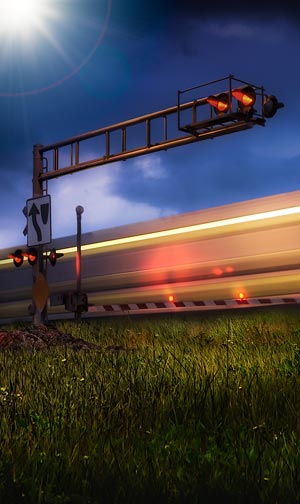NTSB Issues Findings and Recommendation to FRA and FTA on Amtrak Accidents
(Washington, DC – March 8, 2013)
The National transportation Safety Board issued several recommendations Friday to both the Federal Railroad Administration and the Federal Transit Administration, urging the agencies’ efforts in re-educating railroad, rail transit and passenger carrying rail entities and their employees on procedures the agencies issued several years ago in regard to the danger of taking rail signals out of service during maintenance and testing activities.
The Board was acting in regard to two extremely serious accidents which occurred last year when signal employees took grade crossing and railroad signals out of action through the use of jumper (shunt) wires and a fatality resulted in one incident while an entire Amtrak train was switched to the wrong track and the two locomotives and all four cars derailed as a result of a second accident.
On February 28, 2012, two Union Pacific signal employees used jumper wires to take a grade crossing signal out of service in Madison, IL, only to have a young mother drive through the intersection where signals (lights, bells and gates) had been cut out of action, and be struck and killed by a southbound Amtrak train she never heard, saw or had any warning of its approach. The horrible tragedy was witnessed by numerous bystanders and motorists, as well as the video camera located in the Amtrak locomotive’s nose, all who agreed the lights, bells and gates never activated. The NTSB learned that the crossing’s protective system had been temporarily removed from service for testing, inspection and maintenance and never activated as the train approached.
The tragedy was reminiscent of a similar situation which occurred in McLean, IL September 26, 1999, when a Union Pacific signal employee took crossing signals out of service and two teenagers died when an Amtrak train struck their auto without warning.
In the other case, on October 21, 2012, an eastbound Amtrak train with two locomotives and four cars travelling at 61 mph and carrying 165 passengers and four crew members was erroneously routed from the main line onto a side track by a misaligned power-operated switch, derailing the train after it had traveled 254 feet, with the consist remaining upright until it stopped nearly 1,100 feet beyond the point of derailment. During the ensuing investigation, the NTSB found that an Amtrak signal employee had been performing troubleshooting activities using jumper wires, circumventing the signal system’s ability to verify that the power-operated switch was properly aligned and locked in the correct position for the displayed signals.
“Required safety precautions were not taken by railroad employees during maintenance and repair activities that resulted in one fatality and put hundreds of passengers at risk,” said NTSB Chair Deborah Hersman. “In railroading, what may seem like a small oversight can have deadly consequences – that is why we issue our recommendations – to shine a light on problems that need attention.”


